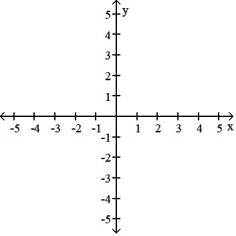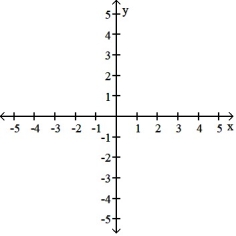Correct Answer

verified
Correct Answer
verified
Short Answer
Given a zero of the polynomial, determine all other zeros (real and complex) and write the polynomial in terms of a product of linear factors.

Correct Answer

verified
Correct Answer
verified
Short Answer
Find all zeros (real and complex). Factor the polynomial as a product of linear factors.

Correct Answer

verified
x = -10 ± ...View Answer
Show Answer
Correct Answer
verified
View Answer
Short Answer
Graph the quadratic function.
y =  - 1
- 1

Correct Answer

verified
Correct Answer
verified
Multiple Choice
Rewrite the quadratic function in standard form by completing the square.

A) ![]()
B) ![]()
C) ![]()
D) ![]()
F) A) and C)
Correct Answer

verified
Correct Answer
verified
Multiple Choice
Determine if the function is a polynomial.  If it is, state the degree.
If it is, state the degree.
A) Not a polynomial
B) a polynomial of degree 21
C) a polynomial of degree 42
D) a polynomial of degree 4
F) B) and C)
Correct Answer

verified
Correct Answer
verified
Short Answer
Graph the quadratic function.
y =  + 2x + 4
+ 2x + 4

Correct Answer

verified
Correct Answer
verified
Multiple Choice
Determine whether the number 2 is a zero of f (x) =  + 5
+ 5  - 22x + 16. If it is, find the other real zeros.
- 22x + 16. If it is, find the other real zeros.
A) 2 is not a zero.
B) 2 is a zero and the others are 1 and -8.
C) 2 is a zero and the others are -1 and 8.
D) 2 is a zero and there are no other real zeros.
F) All of the above
Correct Answer

verified
Correct Answer
verified
Multiple Choice
Find the vertex of the parabola associated with the quadratic function.
Y =  + 6x + 22
+ 6x + 22
A) (3, -13)
B) (-3, -13)
C) (-3, 13)
D) (3, 13)
F) None of the above
Correct Answer

verified
Correct Answer
verified
Multiple Choice
A rancher has 3000 linear feet of fencing and wants to enclose a rectangular field and then divide it into two equal pastures with an internal fence parallel to one of the rectangular sides. What is the maximum area of each pasture?
A) 187,500 square feet
B) 15,000 square feet
C) 375,000 square feet
D) 360,000 square feet
F) None of the above
Correct Answer

verified
Correct Answer
verified
Multiple Choice
For the rational function f (x) =  , find all vertical and horizontal asymptotes.
, find all vertical and horizontal asymptotes.
A) vertical asymptotes x = -1 and x = -7, horizontal asymptote y = 2
B) vertical asymptotes x = -1 and x = -7, horizontal asymptote y = ![]()
C) no vertical asymptotes, horizontal asymptote y = 2
D) vertical asymptotes x = 1 and x = 7, horizontal asymptote y = ![]()
F) B) and C)
Correct Answer

verified
Correct Answer
verified
Multiple Choice
Use the rational zero theorem to list the possible rational zeros. 
A) {±1, ±1/11, ±7/11}
B) {±1, ±11, ±7, ±77}
C) {±1, ±11, ±7, ±77, ±1/11, ±7/11}
D) {±1, ±11, ±7}
F) All of the above
Correct Answer

verified
Correct Answer
verified
Multiple Choice
Find all the real zeros (and state their multiplicity) of the polynomial function. 
A) 0, 8
B) 0 (multiplicity 4) , 8 (multiplicity 2)
C) 8 (multiplicity 2)
D) 0 (multiplicity 6) , 8 (multiplicity 2)
F) A) and C)
Correct Answer

verified
Correct Answer
verified
Short Answer
Find the standard form of the equation of a parabola whose vertex is (5, 10) and passes through the point (3, 30).
Correct Answer

verified
Correct Answer
verified
Multiple Choice
Find the general form of the equation of a parabola whose vertex is (2, 1.5) and passes through the point (1, 0.3) .
A) ![]()
B) ![]()
C) ![]()
D) ![]()
F) B) and C)
Correct Answer

verified
Correct Answer
verified
Multiple Choice
Find the domain of the rational function f (x) = ![Find the domain of the rational function f (x) = . A) (-?, -2) ? (-2, ?) B) [25, ?) C) (-?, 2] ? [2, ?) D) (-?, 2) ? (2, ?)](https://d2lvgg3v3hfg70.cloudfront.net/TBW1040/11ee60ed_696c_1308_8ef4_4d8227d9efd1_TBW1040_11.jpg) .
.
A) (-?, -2) ? (-2, ?)
B) [25, ?)
C) (-?, 2] ? [2, ?)
D) (-?, 2) ? (2, ?)
F) A) and B)
Correct Answer

verified
Correct Answer
verified
Multiple Choice
Find the domain of the rational function.
F (x) = 
A) (-?, -8) ? (8, ?)
B) (-?, -8) ? (-8, 5/4) ? (5/4, ?)
C) (-8, 5/4)
D) (-?, -3/5) ? (3/5, ?)
F) B) and C)
Correct Answer

verified
Correct Answer
verified
Multiple Choice
For the polynomial function f (x) = 5  +3x - 7, use synthetic division to find f (6) .
+3x - 7, use synthetic division to find f (6) .
A) 1091
B) 1104
C) 1182
D) 6
F) B) and C)
Correct Answer

verified
Correct Answer
verified
Short Answer
Use the graphing strategy to graph the rational function.
f (x) = 

Correct Answer

verified
Correct Answer
verified
Short Answer
A person standing near the edge of a cliff 150 feet above a lake throws a rock upward with an initial speed of 40 feet per second. The height of the rock above the lake at the bottom of the cliff is a function of time and is described
 -How many seconds will it take until the rock reaches its maximum height?
What is that height?
-How many seconds will it take until the rock reaches its maximum height?
What is that height?
Correct Answer

verified
1.25 secon...View Answer
Show Answer
Correct Answer
verified
View Answer
Showing 41 - 60 of 115
Related Exams